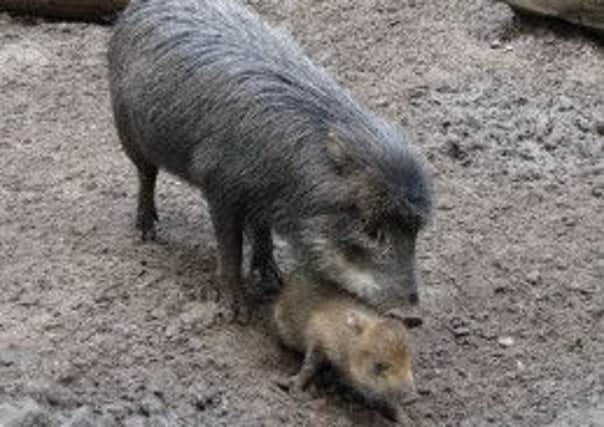IUCN: 1 in 3 species could face extinction


The new Red List of Threatened Species by the International Union for the Conservation of Nature (IUCN) prompted fresh calls to step up conservation efforts when it was published yesterday.
As well as the three species now extinct, the report reveals “worrying declines” in populations of a Chinese porpoise, tropical cone snails and conifers around the globe, with a total of 20,934 species now listed as threatened with extinction out of the 70,294 assessed – almost one in three.
Advertisement
Hide AdAdvertisement
Hide AdJane Smart, global director of the IUCN’s biodiversity conservation group, said: “We now have more information on the world’s biodiversity than ever before, but the overall picture is alarming. “We must use this knowledge to its fullest – making our conservation efforts well-targeted and efficient – if we are serious about stopping the extinction crisis that continues to threaten life on earth.”


The Santa Cruz pupfish, once found in the Santa Cruz river basin in Arizona, has been wiped out by water depletion, while the Cape Verde giant skink, a lizard that lived only on one island and two smaller islets, has been hunted to death by introduced rats and cats.
A freshwater shrimp found in Java, Indonesia, has died out due to habitat degradation and urban development.
One of the world’s few remaining freshwater cetaceans, the Yangtze finless porpoise, is considered critically endangered. Populations of the creature, which is found only in China’s Yangtze River and two adjoining lakes, were estimated to number 1,800 in 2006 but have been declining by more than 5 per cent a year since the 1980s. Illegal fishing, high boat traffic, sand mining and pollution are hampering the animal’s struggle for survival.
The first global assessment of freshwater shrimps was carried out as part of the latest research for the Red List and shows nearly a third are now facing extinction from threats including pollution, the aquarium trade and modification of habitat.
Cone snails, which are important predators in their tropical marine environments, have also been included in the study for the first time and results have revealed that many are facing extinction. The first worldwide assessment of conifers, the planet’s largest and oldest organisms, is included in the new list, which reveals a third of cedars, cypresses, firs and other cone-bearing plants are now at risk of extinction – an increase of 4 per cent since 1998.
California’s Monterey pine has also been upgraded to endangered.
Detail of the species
Monterey Pine
California’s Pinus radiata is generally confined to promontories and strips of rocky coast as well as two offshore islands, and it is rarely found more than six or seven miles from the sea. Threats include logging, feral goats, an introduced alien pathogen (pitch canker fungus) and competition from other trees. It is now classed as endangered. Of three subpopulations on the mainland coast of California and two to three on two islands off the coast of Mexico, only one is healthy and regenerating well.
White–lipped peccary
Advertisement
Hide AdAdvertisement
Hide AdFOUND in the Amazon, the Tayassu pecari, is considered vulnerable due to a decrease in its population – estimated to be close to 30 per cent in the past three generations (about 18 years). Habitat loss, illegal hunting, competition with livestock and epidemics are blamed for the decline, although new evidence suggests several cases of mysterious disappearances. It is already regionally extinct in El Salvador and is assessed as having a low probability of long-term survival.
Yangtze finless porpoise